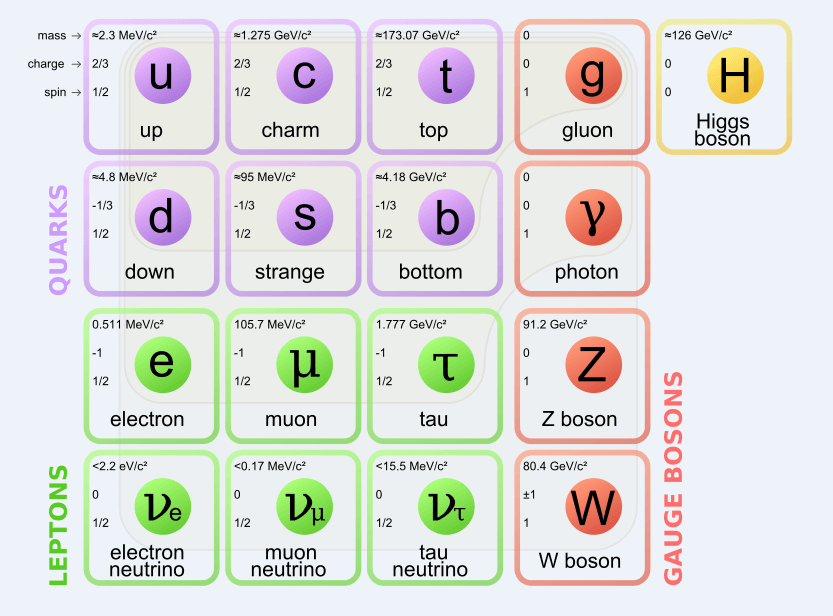Introduction to Photons: The Building Blocks of Light
Photons are fascinating particles at the core of electromagnetic radiation that make up what we perceive as light and other forms of energy throughout the electromagnetic spectrum. Unlocking their secrets opens doors for understanding light behavior, unraveling quantum mechanical mysteries and discovering modern scientific advances.
At their core, photons serve as messengers of electromagnetic force - uniting all parts of nature together through electromagnetic fields. Yet their unique double nature - showing properties as both particles and waves - represents one of the hallmarks of quantum mechanics and challenges our classical intuitions about reality, offering tantalizing glimpses into its depths.
In this article, we begin our journey into the fascinating realm of photons by investigating their properties and behavior as well as exploring their profound ramifications for understanding our universe. From their role in wave-particle duality to cutting-edge applications such as nanotechnologies, we will reveal their multifaceted world which shapes both light and our perception of it throughout. So let's begin our adventure into these amazing entities that make up light: photons!
Particle-Wave Duality: Exploring Photons' Unique Nature
Few phenomena in quantum mechanics captivate scientists and thinkers as much as photons' intriguing particle-wave duality, which serves as the cornerstone of understanding their interactions with our environment. This intricate yet paradoxical behavior lies at the core of understanding their unique properties as photons.
Classically, we tend to view entities as either particles or waves; however, quantum physics defies such simple categorization. Photons (and other quantum particles) possess an intriguing duality that defies easy explanation; depending on experimental circumstances they can display characteristics both as particles and waves simultaneously.

Credit: www.clearias.com
Photons often act like discrete particles, exchanging energy in quantized packets. This behavior is especially apparent during phenomena like the photoelectric effect where photons strike material surfaces and release electrons as photons strike it; on the other hand, experiments like double-slit experiment involve photons creating interference patterns reminiscent of waves which indicate their distributed and wavelike nature.
The particle-wave duality challenges our understanding of reality and forces us to reexamine how the universe functions. Through experimentation and theoretical investigation, scientists continue to probe this duality, seeking to reveal more mysteries behind photon behavior.
Photon Properties: Massless, Speed of Light and Energy Photons, the tiny packets of electromagnetic energy that comprise light, possess various intriguing and essential properties that make them fascinating pieces of the universe. By studying these attributes more closely we gain new insights into its behavior as it interacts with matter.
One of the most striking characteristics of photons is their absence of mass. Unlike particles like electrons and protons, which contain mass, photons have no mass; their unique property enables them to travel at light's universal speed limit of approximately 299,792,458 meters per second whether traversing space or passing through mediums such as air or water - an 'c value.'
Photon energy can be determined from its frequency and wavelength using the equation E = hf, where E stands for energy of photons; Planck's constant is represented by "h", while frequency denoted by "f". This relationship shows quantized nature of energy transfer using photons - further emphasizing their role as primary carriers of electromagnetic force.
Photons do not limit themselves to visible light; instead they span the electromagnetic spectrum from radio waves to microwaves, infrared radiation, ultraviolet rays, X-rays and even gamma rays. Their wide spectrum of energies and frequencies allows photons to serve a multitude of functions within it - from transmitting data across fiber-optic cables to supporting medical imaging techniques like X-rays and MRIs.
Electromagnetic Spectrum: Photons and the Spectrum of Radiations The electromagnetic spectrum, which encompasses radio waves to gamma rays, provides photons a canvas upon which they create the energetic landscape that constitutes our universe. Understanding its role and that of photons within it are key in comprehending all forms of radiations which exist today - be they radio waves or gamma rays.
At the core of electromagnetic energy are photons - messengers of electromagnetic force which travel throughout space and matter. This spectrum can be divided into distinct regions depending on their energy or frequency of photons that inhabit them; typically radio waves and microwaves used for communication and heating applications reside on lower energy, longer-wavelength sides.
Moving up the spectrum, we encounter infrared radiation which has applications in thermal imaging and remote sensing. Visible light, which our eyes are attuned to, represents just a tiny sliver in between these extremes that demonstrates photons' power to stimulate our senses and bring colors and beauty to the world around us.
As we progress upward, ultraviolet light becomes increasingly relevant, from tanning to sterilizing water and air. Meanwhile, x-rays' higher energy can penetrate soft tissues for medical diagnostics while gamma rays (the most energetic photons) originate in nuclear processes or cosmic phenomena.
Each region of the electromagnetic spectrum provides unique insights and applications made possible by photons' behavior. By studying interactions between photons and matter across this spectrum, scientists have gained unparalleled insights into everything from molecular bonds to cosmic evolution itself.
Application of Photons: From Communication to Medical Imaging
Photons are remarkable fundamental particles whose remarkable properties go far beyond providing light in our environment. Their presence has revolutionized communication, medical diagnosis and even understanding cosmic mysteries.
- Telecommunications and Information Transfer: One of the most prolific applications of photons lies in telecommunications, particularly fiber-optic cables made of transparent material that utilize the efficient transmission of light pulses for data transfer over vast distances at the speed of light - thus serving as the foundation of modern internet and worldwide communication networks.
- Medical Imaging and Diagnosis: Photons play an indispensable role in medicine, from diagnostic imaging (X-ray radiography, computed tomography (CT), magnetic resonance imaging (MRI), to medical diagnosis. Techniques like X-ray radiography, CT scans and MRI scanners use photon interactions with human bodies to create detailed images that assist physicians with diagnosing ailments, prescribing treatments, and improving patient care.
- Laser Technology: Lasers harness photons' concentrated energy to emit an intense beam of light that has multiple uses ranging from precision cutting and welding in industrial settings, eye surgeries and tattoo removal procedures, as well as tattoo removal procedures.
- Spectroscopy and Chemical Analysis: By studying how photons interact with matter, spectroscopy offers unique insights into the composition and properties of substances. UV-Vis, IR and Raman spectroscopies all allow scientists to identify compounds, study molecular structures and monitor chemical reactions more effectively.
- Solar Energy and Photovoltaics: Photons from the Sun power photovoltaic cells that generate electricity using this renewable source of power, making photovoltaics an attractive alternative to fossil fuels in terms of sustainability and clean living. Consider to expand knowledge about photodiode regarding the photovoltaic phenomenon.
- Astronomy and Astrophysics: Telescopes and detectors designed to capture different wavelengths of light ranging from radio waves to gamma rays enable astronomers to observe celestial objects and phenomena across the vast expanse of space.
- Quantum Information and Computing: Within quantum technologies, photons are harnessed as qubits - building blocks of quantum computing and cryptography. Due to their delicate properties, photons make ideal candidates for quantum information processing.

